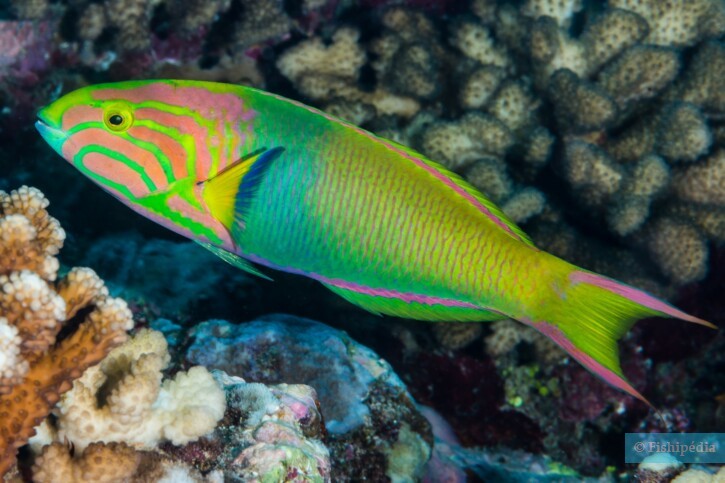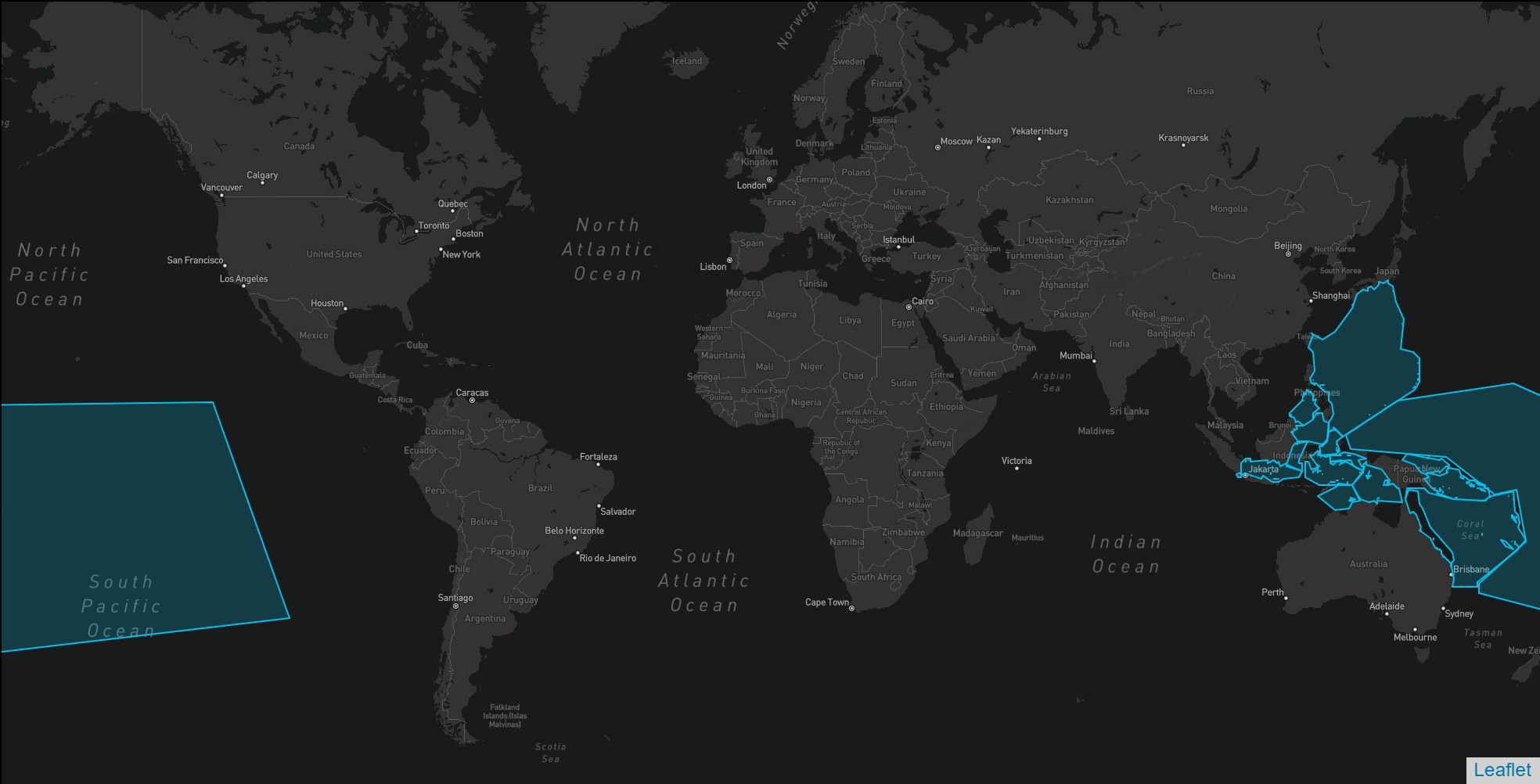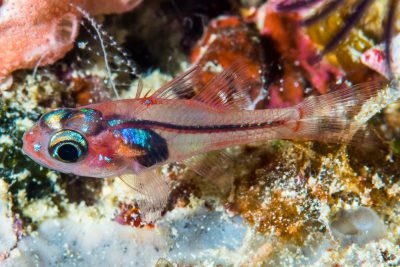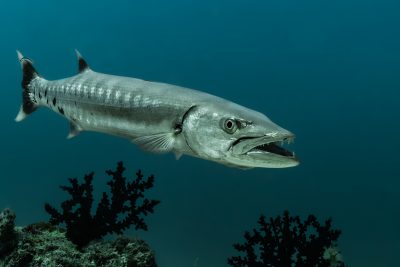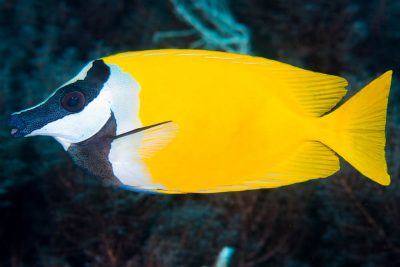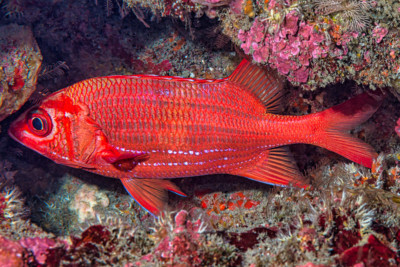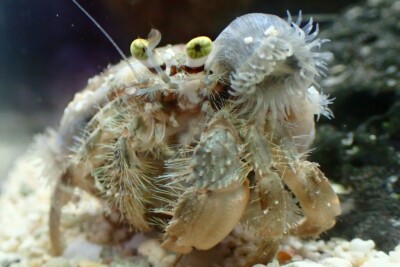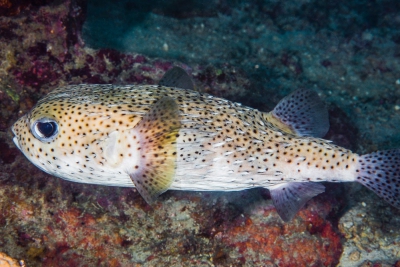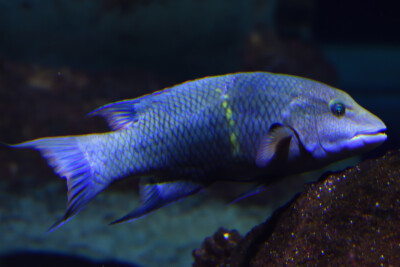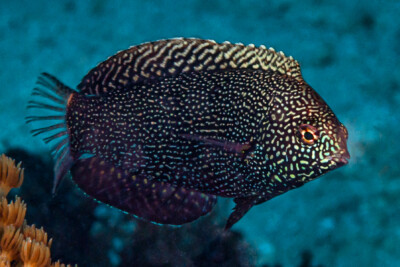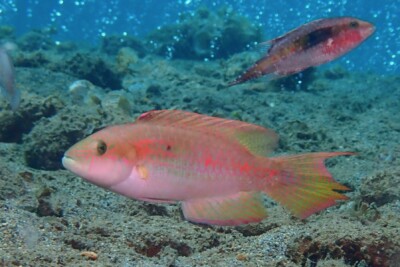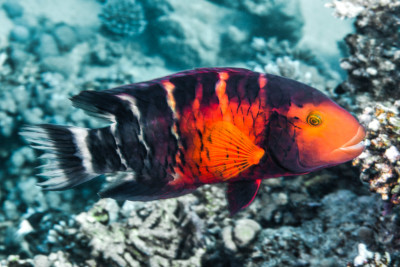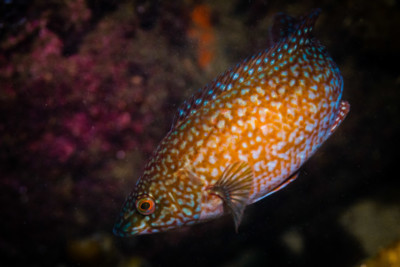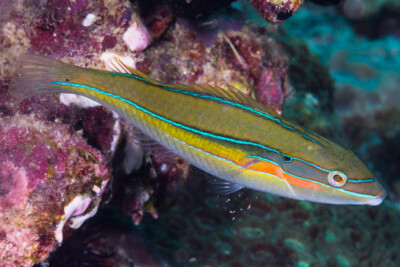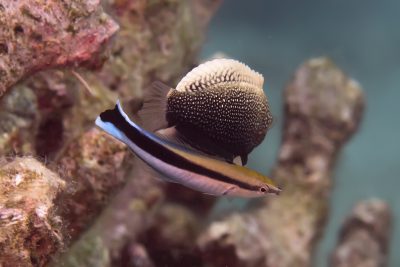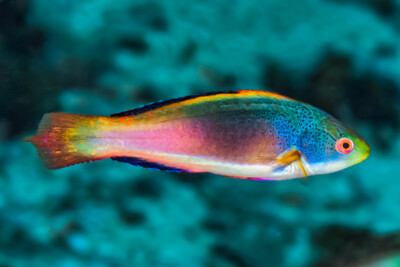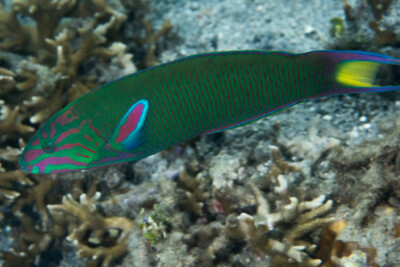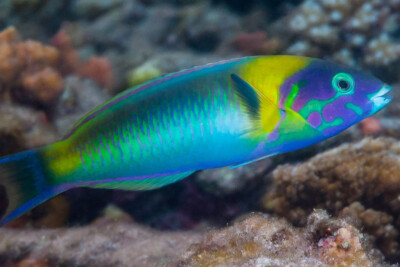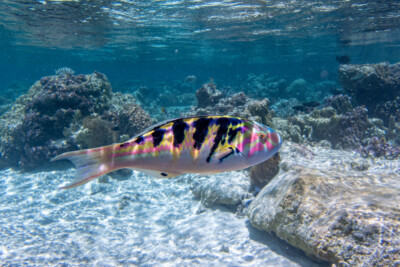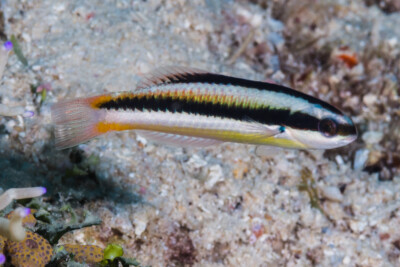yellow-brown wrasse
| Family | Labridae |
|---|---|
| Genus | Thalassoma |
| IUCN category (World) | LC |
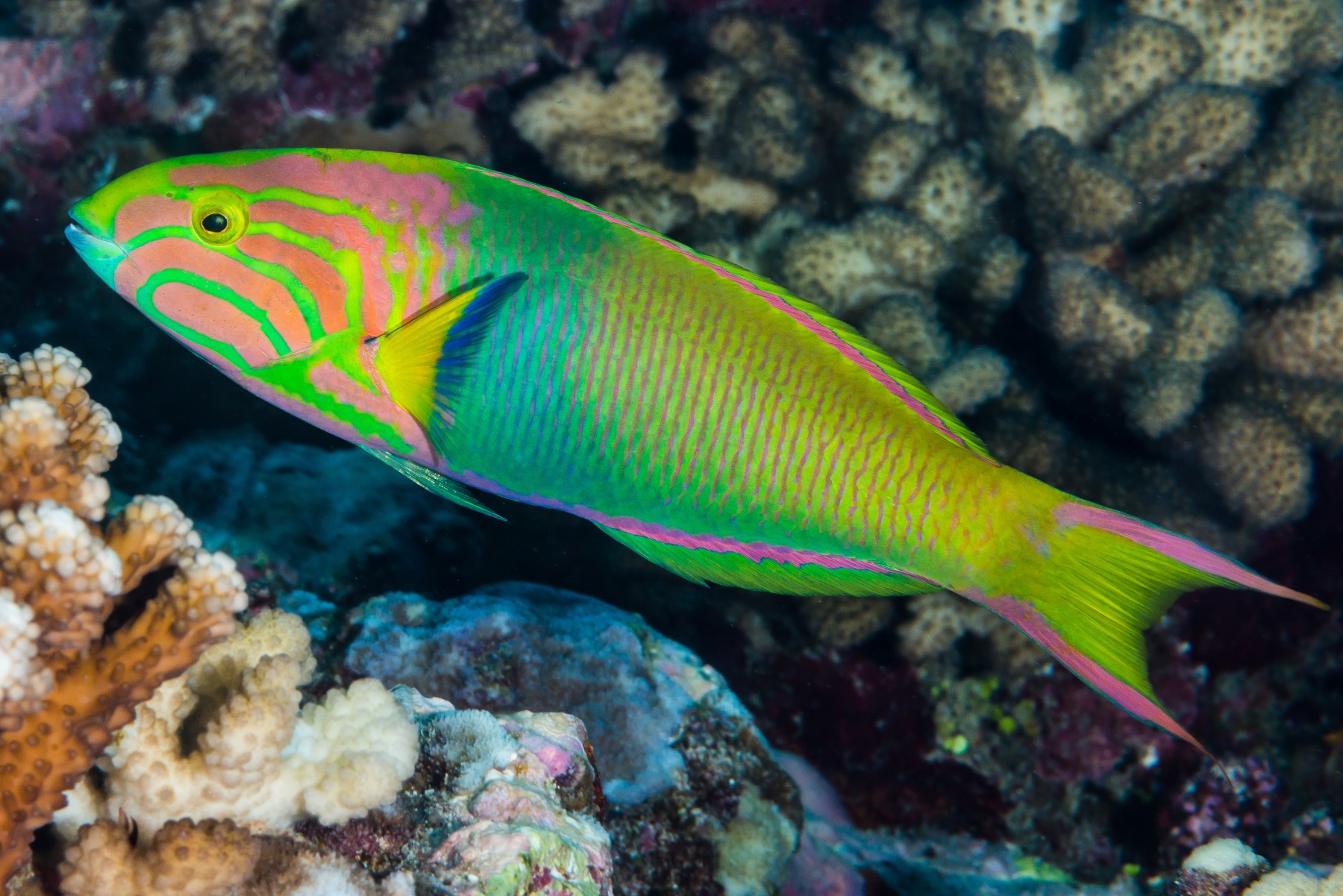

Introduction
Thalassoma lutescens, commonly known as yellow-brown wrasse, is a salt water fish.
This sheet is currently being prepared. The texts currently proposed come from our data model or are being drafted. To request priority for this content, you can write to us HERE.
Who is it?
Morphology
-
Type
-
Average size25 cm
-
Maximum size30 cm
-
Patterndiagonal stripes
-
Type
-
Average size25 cm
-
Maximum size30 cm
-
Patterndiagonal stripes
How to recognize This fish ?
The yellow-brown wrasse measures around 25 cm. The dominant males can however reach 30 cm. This fish is multicolore with a predominantly jaune, bleu and vert body. The also has rouge diagonal stripes.
Sexual dimorphism
The adult male is bigger than the female.
Behaviour & Life cycle
-
dietcarnivorous
-
Sociabilityliving in a group or alone
-
territorialYes
-
Way of livingdiurnal
The yellow-brown wrasse is a fish living in a group or alone naturally found near the bottom. This species is carnivorous .
The yellow-brown wrasse is a territorial animal that does not tolerate any incursions into its living area. It is particularly virulent against other territorial species and it can provoke heated fights. Relationships between conspecifics are also hectic, with each seeking to secure its place.
Reproduction
-
Reproductionovipare qui pond en eau libre
-
Hermaphroditeprotogynous
The yellow-brown wrasse is a fish ovipare qui pond en eau libre. always born female. Growing up, individuals will change sex to become male, this is called successive hermaphroditism of the protogynous type.
Harmless species
This species does not represent any particular threats to humans when encountered in its natural environment.
Origin and distribution
What is its habitat?
Natural environment characteristics
-
Temperature24 - 29 °C
-
Depth1 - 30 m
Biotope presentation
The yellow-brown wrasse is most often found at a depth between 1m and 30m. However, it is not impossible to find this species at other depths.
Species of the same biotope
To go further
Sources & Contributions
Participation & Validation
The Fishipedia team and specialist contributors are committed to providing high-quality content. However, although the information comes from scientific sources or testimonials from specialists, the cards may contain inaccuracies.

Benoit Chartrer
Translation
Translation done with the valuable contribution of our translators, who make this information available to a wider audience. We sincerely thank them for their commitment.
Scientific partners
Tags
Species of the same family
Same genus
Species of the same biotope
